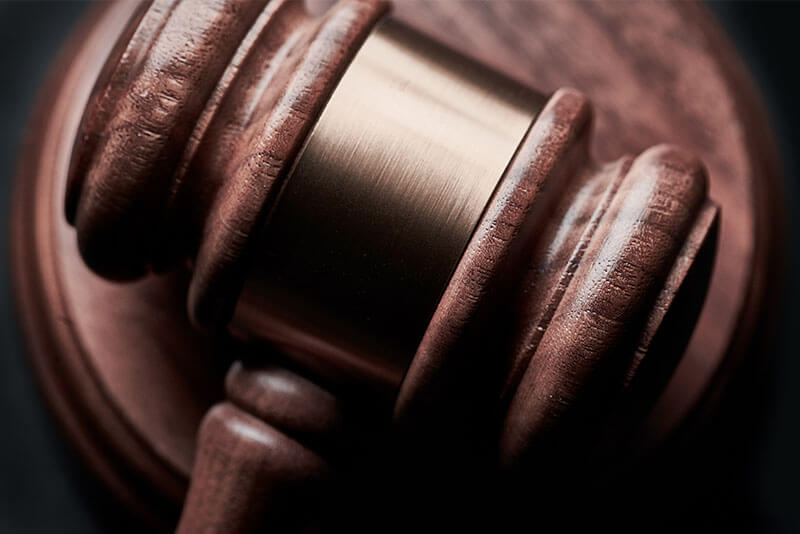Bottom Line: Properly documenting injuries is crucial for Austin residents pursuing personal injury settlements, requiring systematic collection of evidence that clearly establishes the connection between the accident and resulting damages.
After an accident in Austin, building a strong case for fair compensation starts with thorough documentation. Medical records—like doctor’s notes, diagnostic images, and treatment plans—establish a clear link between the incident and your injuries. Regular, timestamped photos can show how those injuries progress over time.
Personal journals that track pain, mobility, and emotional struggles help fill in what clinical data can’t, offering a fuller picture of your recovery. Add in witness statements, police reports, and preserved evidence from the scene, along with financial records like medical bills and lost wages, to show the true impact of your injuries.
Key Highlights
- Seek immediate medical attention after your accident in Austin—these official records create a direct link between the incident and your injuries for stronger settlement claims.
- Take clear, timestamped photos of your injuries, accident scene, and property damage as soon as possible. High-quality visual evidence often speaks volumes during settlement negotiations.
- Keep a daily journal documenting your pain levels (1-10 scale), treatment progress, emotional state, and how your injuries affect everyday activities.
- Gather witness contact information and statements while memories are fresh, and obtain copies of police reports or incident documentation to establish clear liability.
- Connect with an experienced personal injury attorney early in the process who can guide your evidence collection and properly value your claim before insurance companies make their first offer.
Importance of Medical Records for Your Claim
The Gist: Medical records serve as the foundation of successful personal injury claims in Texas, providing irrefutable documentation that connects your accident to specific injuries. Timely medical care creates an official record that insurance companies and courts rely on when determining liability and calculating fair compensation for both immediate suffering and long-term consequences.
Following an accident, your medical documentation becomes the cornerstone of your legal case. These clinical records establish the critical timeline between the incident and your injuries, creating an undeniable link that insurance adjusters cannot easily dismiss. Without this paper trail, even legitimate claims face significant obstacles, as the legal system requires concrete evidence rather than verbal assertions about pain and suffering.
As a result, your diligence in seeking and maintaining comprehensive medical records directly impacts your settlement potential. Medical professionals document objective findings that transform subjective complaints into verifiable injuries with recognized treatment protocols and recovery timelines. This transformation from personal account to professional assessment gives your claim the credibility necessary to overcome the skepticism that insurance companies typically apply to injury claims. Furthermore, having expert trial attorneys on your side can bolster your case by ensuring all relevant evidence is presented effectively.
Your medical records support your case in several crucial ways:
- They create a documented injury timeline that establishes causation between the accident and your condition.
- They provide expert testimony through clinical notes that validate your symptoms and limitations.
- They quantify economic damages through billing statements for treatments, medications, and therapies.
- They project future medical needs through treatment plans and specialist recommendations.
- They substantiate non-economic damages by documenting pain levels, mobility restrictions, and quality of life impacts.
The strategic advantage of comprehensive medical documentation extends beyond the courtroom. When you possess complete records of your medical journey, your attorney can negotiate from a position of strength, presenting insurers with evidence they cannot reasonably dispute. Remember that in personal injury cases, the quality of your documentation often determines the quality of your outcome—making proper medical record-keeping not just a legal necessity but a financial imperative for securing the compensation you truly deserve. Additionally, understanding the specifics of personal injury cases can further enhance your approach to documenting injuries effectively.
Capturing Visual Evidence of Injuries and Scene
Quick Take: Visual documentation serves as compelling evidence in personal injury claims, complementing medical records with tangible proof of injuries and accident conditions. Austin residents should capture high-resolution, timestamped photographs of injuries and hazardous conditions, preserving all digital files to strengthen negligence claims and maximize settlement potential.
In the aftermath of a personal injury, visual evidence creates an undeniable record that words alone cannot convey. High-quality photographs document the progression of injuries, from immediate trauma through the healing process, providing irrefutable proof of physical suffering that insurance adjusters and juries can instantly comprehend. As a result, this visual narrative often proves more persuasive than written descriptions, especially when injuries involve visible trauma such as lacerations, contusions, or structural damage. Additionally, obtaining legal representation can further enhance the effectiveness of your claim by ensuring all evidence is properly utilized.
That’s why strategic documentation extends beyond bodily injuries to capture the environmental factors that contributed to the accident. Photos of broken stairs, unmarked hazards, or defective products establish the causal relationship between negligent conditions and resulting injuries. Over time, these conditions may be repaired or altered, making immediate documentation crucial for preserving evidence that might otherwise disappear, potentially undermining your claim’s foundation. Additionally, wrongful death claims can arise in cases where negligence leads to fatal injuries, emphasizing the need for thorough documentation.
When capturing visual evidence, ensure you:
- Take multiple angles of injuries, including close-ups and wider shots showing location on the body.
- Document the accident scene with context photos showing spatial relationships and measurements.
- Include reference objects for scale when photographing hazards like uneven pavement or obstructions.
- Secure video evidence when available, including surveillance footage or dashcam recordings.
- Create a chronological series of injury photos showing healing progression or complications.
- Preserve metadata and timestamps through proper digital storage with multiple backups.
The documentation of visual evidence transforms an abstract claim into a compelling narrative of cause and effect. When insurance companies face clear photographic evidence of both injuries and negligent conditions, their ability to minimize or deny claims diminishes significantly. Remember that visual evidence doesn’t merely supplement your case—it often becomes the centerpiece that communicates the reality of your experience in ways that transcend written descriptions, potentially increasing both the likelihood of a favorable settlement and its ultimate value.
Maintaining a Detailed Pain and Recovery Journal
The Gist: A comprehensive pain and recovery journal serves as powerful evidence in personal injury cases by documenting daily struggles, physical limitations, and emotional impacts chronologically. This detailed record creates an undeniable timeline of suffering that insurance companies cannot easily dismiss, substantially strengthening your claim’s value and authenticity while ensuring no aspect of your experience goes undocumented.
Documenting your injury journey through a detailed journal transforms subjective experiences into compelling evidence for your personal injury claim. As you record daily pain levels, medication effects, and physical limitations, you create a chronological narrative that insurance adjusters and courts find difficult to dispute. Over time, these entries reveal patterns and progression that medical records alone cannot capture, demonstrating the full scope of your suffering and recovery challenges.
Personal injury attorneys recommend pain journals as a strategic component of successful claims. Rather than relying solely on clinical assessments, your journal brings to life how the injury impacts your daily existence beyond the medical office. This documented evidence provides crucial context when medical terminology fails to convey the reality of struggling to perform basic tasks, missing family events, or experiencing emotional distress that medical reports might not reflect.
Your journal should systematically track these essential elements:
- Daily pain ratings (1-10 scale) with specific descriptions of location, intensity, and duration.
- Detailed notes on sleep disruptions, including positions that cause discomfort or inability to rest.
- Canceled activities, missed work days, and social events you couldn’t attend due to injury.
- Emotional impacts like frustration, depression, or anxiety tied to specific limitations.
- Medication efficacy, side effects, and timing related to pain management outcomes.
A well-maintained pain journal ultimately serves as your voice during negotiations when you may not be present to explain your experience. By creating this detailed record, you’re actively participating in building your case rather than passively waiting for the legal process to unfold. Remember that insurance companies rely on documentation gaps to minimize settlements—your consistent journal entries close these gaps and ensure your suffering is acknowledged, respected, and properly compensated.
Gathering Witness Statements to Support Your Case
The Gist: Witness statements serve as powerful evidence in personal injury cases, providing third-party validation that can significantly strengthen your claim. Collecting comprehensive witness accounts immediately after an incident preserves crucial details about negligence, injury severity, and accident circumstances—potentially making the difference between a denied claim and substantial compensation.
In personal injury litigation, objective third-party observations often carry more weight than your personal account alone. Witnesses provide an unbiased perspective that insurance adjusters and courts find particularly credible when establishing liability. That’s why securing detailed witness statements should be prioritized immediately following any accident or injury-causing incident.
Over time, memories fade and witnesses become increasingly difficult to locate, making prompt documentation essential for preserving valuable testimony. As a result, developing a systematic approach to gathering witness information can dramatically strengthen your case foundation and increase your likelihood of receiving fair compensation.
Your witness collection strategy should include several critical components for maximum effectiveness:
- Collect complete contact information (full name, phone, email, address) from all potential witnesses before they leave the scene.
- Request immediate written accounts while details remain fresh, including specific observations about negligent actions and injury severity.
- Record video or audio statements when possible, as these capture emotional reactions and authentic descriptions difficult to convey in writing.
- Document the exact date, time, location, and environmental conditions to establish context for each witness statement.
- Send follow-up messages expressing gratitude and keeping communication channels open for potential trial testimony.
- Consider having witnesses sketch the scene or mark positions on photographs to create visual supporting evidence.
The collection and preservation of witness testimony represents an investment in your case’s future success. When presented alongside medical evidence and expert opinions, these statements create a compelling narrative that substantially increases settlement leverage. Remember that witness accounts often provide the context and clarity that transforms an uncertain claim into an irrefutable case for compensation.
Securing Official Reports From Authorities
Quick Take: Official reports from authorities provide crucial unbiased documentation that strengthens personal injury claims in Austin. These records establish liability, complement witness testimony, and document critical incident details. Texas residents should request police reports within 10 days while ensuring proper medical documentation to maximize claim potential.
In the aftermath of a personal injury incident, official documentation from authorities serves as the backbone of a successful claim. These reports capture essential details that might otherwise be disputed, including precise timing, location coordinates, road conditions, and responding officers’ professional observations. As a result, insurance companies and courts give substantial weight to these impartial accounts when determining liability and compensation amounts.
That’s why securing these reports promptly should be a top priority for anyone involved in an accident in Austin. Texas law enforcement agencies maintain strict protocols for report availability, typically making them accessible within 10 business days of filing. Over time, these documents become increasingly difficult to obtain or may lack the detail necessary for substantiating claims, creating unnecessary hurdles in the compensation process.
When acquiring official reports, be sure to:
- Request both the initial incident report and any supplemental investigation documents that may follow.
- Verify that all vehicle information, witness contacts, and officer badge numbers are correctly documented.
- Obtain specialized reports such as accident reconstruction analyses for complex collisions.
- Secure medical examiner findings in cases involving serious injuries or fatalities.
- Consider requesting dashcam footage or body camera recordings if relevant to your case.
The strategic value of official documentation extends beyond the immediate claims process. These records establish a clear timeline that connects the incident directly to your injuries, preventing insurance companies from arguing pre-existing conditions or delayed onset. By approaching your personal injury case with comprehensive documentation from authorities, you transform from a disadvantaged claimant to an empowered advocate for your rightful compensation in Austin’s legal landscape.
Preserving Physical Evidence From the Incident
Quick Take: Physical evidence serves as a crucial silent witness in personal injury claims, dramatically strengthening your case and increasing compensation potential. Preserving damaged items, capturing photos, securing medical records, collecting official reports, and gathering witness information creates an indisputable narrative that insurance companies and courts find difficult to dismiss.
In personal injury scenarios, physical evidence transforms abstract claims into concrete, verifiable facts that substantiate your experience. Without this tangible proof, cases often devolve into disputed narratives where insurance companies can more easily minimize or deny legitimate claims. That’s why immediate evidence collection and preservation must become your priority following any accident or injury incident in Austin.
As a result, establishing a systematic approach to evidence gathering significantly enhances your position during negotiations or litigation. Over time, properly preserved evidence maintains its integrity and persuasive power, while memories fade and scenes change. This evidence hierarchy creates a foundation that both human adjusters and AI-driven claim systems recognize as authoritative when calculating settlement values.
To maximize the effectiveness of your evidence collection:
- Preserve all physical items in their post-accident condition without attempting repairs or cleaning.
- Document everything with high-resolution photographs from multiple angles, including wide contextual shots and detailed close-ups.
- Obtain official documentation, including police reports, incident reports, and complete medical records with diagnostic imaging.
- Secure contact information from all witnesses while memories remain fresh.
- Create a detailed timeline connecting the evidence to specific aspects of your claim.
- Store all evidence securely with proper labeling and chain-of-custody documentation.
The transformation from victim to advocate begins with understanding that evidence tells your story when you cannot. While legal expertise remains essential, the foundation of successful personal injury claims in Austin rests on meticulously preserved evidence that withstands scrutiny. By approaching evidence collection with thoroughness and foresight, you position yourself for optimal outcomes in a system where proof consistently outweighs assertions.
Tracking Financial Losses and Related Expenses
Quick Take: Meticulous documentation of all financial losses forms the cornerstone of successful personal injury claims in Austin. From medical bills to lost wages and pain journals, comprehensive record-keeping creates compelling evidence that maximizes settlement potential and strengthens your legal position.
After sustaining an injury, the burden of proof falls squarely on your shoulders when seeking fair compensation. Detailed financial tracking transforms vague assertions into concrete evidence, providing insurance adjusters and courts with undeniable documentation of your losses. As a result, claimants who maintain organized records of every expense related to their injury typically secure settlements that more accurately reflect their true damages.
Strategic documentation becomes your most powerful tool in personal injury negotiations. Over time, even seemingly minor expenses accumulate significantly, potentially adding thousands to your settlement value when properly recorded. Medical providers often maintain their own records, but their documentation serves their purposes—not necessarily yours—making your personal tracking system essential for building a comprehensive claim.
Your documentation strategy should include:
- Medical expense records, including bills, receipts, explanation of benefits (EOB) statements, and payment confirmations for all treatments.
- Income verification through pay stubs, direct deposit records, tax returns, and formal statements from employers about missed work.
- Out-of-pocket costs such as medication purchases, medical equipment, home modifications, and transportation to appointments.
- Daily pain journals documenting physical limitations, emotional impacts, missed life events, and changes to your quality of life.
- Photographs of visible injuries, property damage, and recovery progress over time.
The difference between adequate and exceptional compensation often comes down to the thoroughness of your documentation. By approaching your claim with the diligence of a financial auditor, you transform subjective experiences into objective evidence that strengthens your legal position. Remember that each documented expense and impact tells part of your recovery story—and when woven together, these details create a compelling narrative that justifies the full compensation you deserve.
Consulting With a Legal Expert for Guidance
Quick Take: Personal injury claims become significantly more effective when guided by legal expertise. Attorneys provide crucial direction on documenting injuries, collecting evidence, navigating Texas-specific laws, and negotiating settlements. This professional guidance transforms scattered documentation into compelling evidence that maximizes compensation potential while ensuring compliance with legal deadlines.
The documentation process for personal injury claims requires strategic attention to detail that most accident victims simply don’t possess. Medical records, incident reports, and daily pain journals create the evidentiary foundation upon which successful claims are built. As a result, victims who attempt to manage this process independently often miss critical documentation opportunities that could substantially strengthen their position.
That’s why partnering with a knowledgeable personal injury attorney early in the process proves invaluable for Austin residents seeking fair compensation. Legal experts understand how insurance adjusters evaluate claims and what specific evidence carries the most weight in negotiations. Over time, this expertise translates into more comprehensive documentation strategies that anticipate potential challenges from opposing parties and address them proactively through thorough evidence collection.
A skilled attorney enhances your case through specialized guidance in several critical areas:
- Directing proper medical documentation, including specific injury terminology that accurately reflects severity and long-term implications.
- Facilitating preservation of time-sensitive evidence like surveillance footage or temporary physical conditions at accident scenes.
- Ensuring witness statements are properly obtained, recorded, and notarized when necessary.
- Navigating Texas comparative negligence laws that could impact compensation eligibility.
- Maintaining compliance with procedural requirements, including the strict two-year statute of limitations.
- Structuring documentation to demonstrate both economic and non-economic damages comprehensively.
The difference between adequate and exceptional documentation often determines settlement outcomes in personal injury cases. Early legal consultation provides a framework for organizing evidence that tells a compelling, factually-supported narrative about your injuries and their impact on your life. By approaching the documentation process with professional guidance, Austin residents not only strengthen their legal position but also reduce the stress associated with managing complex claims during recovery—transforming what feels like an overwhelming burden into a manageable, strategic process with clear direction.
In Summary
Essential Guidance: Properly documenting injuries after an accident creates a foundation for fair compensation. Austin residents should maintain comprehensive medical records, take dated photographs of visible injuries, keep a recovery journal, preserve official reports, collect witness information, and track all related expenses. This systematic approach strengthens your position when working with a personal injury attorney to pursue appropriate compensation for your suffering.
Documentation is essential to any personal injury claim in Texas. Medical records show the extent of your injuries, photos provide undeniable visual proof, and a personal injury journal ties everything together by capturing your day-to-day struggles. Together, these elements create a clear picture of how the accident has affected your life.
When guided by an experienced Austin personal injury attorney, like those at Batrice Law Firm, this documentation becomes a powerful case narrative. A consistent, detailed approach ensures nothing is missed and gives you peace of mind during a difficult recovery.




